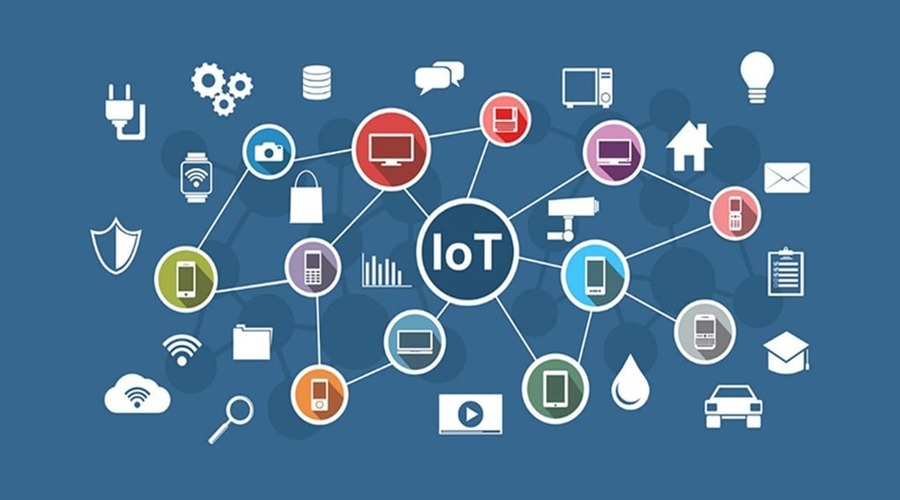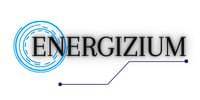
Blockchain-Enabled Data Integrity and Provenance in the Internet of Things
Blockchain technology has revolutionized various industries by providing a secure and transparent platform for transactions. One of the areas where blockchain shows immense potential is the Internet of Things (IoT). The IoT refers to the network of interconnected devices that communicate and exchange data seamlessly. However, with the increasing volume of data generated by IoT devices, ensuring data integrity and provenance has become a significant challenge. In this article, we will explore how blockchain enables data integrity and provenance in the IoT ecosystem.
Introduction to Blockchain and the Internet of Things
The Internet of Things encompasses a vast network of devices, sensors, and systems that interact with each other to gather and exchange data. These devices generate an enormous amount of data, which needs to be accurate, reliable, and tamper-proof. This is where blockchain technology comes into play.
Blockchain is a decentralized and distributed ledger technology that maintains a chronological chain of data blocks. Each block contains a set of transactions or data records, and once added to the chain, it becomes permanent and immutable. The decentralized nature of blockchain ensures that no single entity has control over the entire network, making it highly secure.
Understanding Data Integrity in the IoT
Data integrity refers to the accuracy, consistency, and reliability of data throughout its lifecycle. In the context of the IoT, data integrity involves ensuring that the data generated by various devices remains intact and unaltered during transmission and storage. Data integrity is crucial for making informed decisions and maintaining trust in the IoT ecosystem.
Challenges in Maintaining Data Integrity
The IoT faces several challenges when it comes to maintaining data integrity. Firstly, the sheer volume of data generated by IoT devices makes it difficult to manage and verify its authenticity. Secondly, the centralized nature of traditional data storage systems exposes them to vulnerabilities and single points of failure. Thirdly, data transmitted over insecure networks can be intercepted or tampered with, compromising its integrity.
Maintaining data integrity in the context of the Internet of Things (IoT) poses several challenges. Here are the key challenges:
- Volume of Data: The massive volume of data generated by IoT devices makes it difficult to manage and ensure the integrity of each data point.
- Data Validation: Validating the accuracy and authenticity of the data becomes challenging when multiple devices are involved in data collection and transmission.
- Data Tampering: Data transmitted over insecure networks is susceptible to interception and tampering, compromising its integrity.
- Lack of Standardization: The absence of standardized protocols and formats for data transmission and storage across IoT devices can lead to inconsistencies and potential integrity issues.
- Device Heterogeneity: The IoT ecosystem comprises diverse devices with different capabilities and operating systems, making it challenging to maintain consistent data integrity measures across the network.
- Security Risks: Vulnerabilities in IoT devices and networks can expose data to unauthorized access and manipulation, undermining data integrity.
- Data Lifecycle Management: Ensuring data integrity throughout its lifecycle, including storage, retrieval, and analysis, requires robust data management practices and secure storage solutions.
- Data Synchronization: Achieving synchronization and consistency of data across multiple devices and platforms is a complex task, impacting data integrity.
- Legacy Systems Integration: Integrating IoT devices with existing legacy systems introduces compatibility and integrity challenges due to differences in data formats and protocols.
- Regulatory Compliance: Complying with data privacy and security regulations adds another layer of complexity to maintaining data integrity, requiring organizations to implement stringent controls and safeguards.
Addressing these challenges is essential for establishing and maintaining data integrity in the IoT ecosystem, and leveraging technologies like blockchain can offer promising solutions.
The Role of Blockchain in Ensuring Data Integrity
Blockchain technology addresses the challenges of data integrity in the IoT by providing a decentralized and tamper-proof platform. Here’s how blockchain enables data integrity:
- Immutable Ledger: The data recorded on a blockchain cannot be modified or deleted, ensuring its integrity. Each transaction or data record is encrypted, time-stamped, and added to a block, which is then linked to the previous block, forming a chain of data. Any attempt to tamper with a block will disrupt the entire chain, making it immediately evident.
- Consensus Mechanism: Blockchain networks rely on consensus mechanisms, such as proof-of-work or proof-of-stake, to validate transactions and ensure agreement among participants. This consensus mechanism prevents malicious actors from altering the data, as they would need to control the majority of the network’s computing power.
- Decentralization: Unlike traditional centralized systems, blockchain operates on a peer-to-peer network, where multiple nodes verify and validate transactions. This decentralization eliminates single points of failure and enhances the security and reliability of the data.
Blockchain-Based Data Provenance in the IoT
Data provenance refers to the ability to trace and verify the origin and history of data. In the IoT, data provenance plays a vital role in ensuring the authenticity and reliability of the data generated by connected devices. Blockchain provides an effective solution for establishing data provenance in the following ways:
- Timestamping: Each transaction or data record added to the blockchain is assigned a timestamp, providing an immutable record of when the data was generated or modified. This timestamp acts as a proof of existence and helps establish the chronology and integrity of the data.
- Digital Signatures: Blockchain enables the use of digital signatures to verify the authenticity and integrity of the data. Digital signatures ensure that the data has not been tampered with and can be traced back to the original source.
- Smart Contracts: Smart contracts are self-executing contracts with predefined rules and conditions. In the context of data provenance, smart contracts can be used to automatically enforce data validation rules, ensuring that only valid and authentic data is added to the blockchain.

Blockchain-Enabled Data Integrity and Provenance in the Internet of Things
Advantages of Blockchain-Enabled Data Integrity and Provenance
The integration of blockchain technology into the IoT ecosystem brings several advantages, including:
- Enhanced Security: Blockchain’s decentralized and immutable nature provides a higher level of security and protection against data tampering and unauthorized access.
- Increased Transparency: With blockchain, all participants in the network have access to the same version of the truth. This transparency fosters trust and accountability among stakeholders.
- Improved Efficiency: Blockchain streamlines data verification and validation processes, reducing the need for intermediaries and manual interventions. This leads to increased efficiency and faster data processing.
- Cost Savings: By eliminating the need for intermediaries and reducing the risks of data breaches, blockchain can result in cost savings for organizations operating in the IoT space.
Potential Applications of Blockchain in the IoT
The combination of blockchain and the IoT opens up numerous possibilities across various industries. Some potential applications include:
- Supply Chain Management: Blockchain can enhance supply chain transparency by providing a verifiable record of product origins, certifications, and ownership transfers.
- Smart Energy Grids: Blockchain can enable peer-to-peer energy trading, secure energy transactions, and ensure accurate billing in decentralized energy systems.
- Healthcare: Blockchain can improve the security and privacy of patient data, enable interoperability between different healthcare providers, and facilitate drug traceability.
- Smart Cities: Blockchain can support secure and efficient management of urban infrastructure, including transportation systems, waste management, and public services.
Future Implications and Innovations
As blockchain and IoT technologies continue to evolve, their integration is expected to drive further innovations. Some potential future implications include:
- Scalability: Efforts are underway to enhance the scalability of blockchain networks to accommodate the massive data volumes generated by IoT devices.
- Interoperability: Establishing interoperability standards between different blockchain platforms and IoT devices will enable seamless data exchange and integration.
- Edge Computing: Combining blockchain with edge computing can bring data processing and storage closer to IoT devices, improving latency and efficiency.
- Data Marketplaces: Blockchain can enable secure data marketplaces where IoT device owners can monetize their data while maintaining control over its usage.
Conclusion
Blockchain technology provides a robust solution for ensuring data integrity and provenance in the Internet of Things. By leveraging the immutability, decentralization, and transparency of blockchain, the IoT ecosystem can overcome the challenges associated with data integrity and build trust among stakeholders. As blockchain and IoT technologies continue to evolve and intersect, we can expect to witness transformative changes across industries, paving the way for a more connected and secure future.
FAQs
Q1: Is blockchain technology only applicable to cryptocurrencies like Bitcoin?
No, blockchain technology has applications beyond cryptocurrencies. While Bitcoin was the first prominent use case of blockchain, the technology has evolved to be used in various industries, including supply chain management, healthcare, finance, and the Internet of Things.
Q2: Can blockchain ensure the privacy of data in the IoT?
Blockchain technology provides data immutability and security, but it does not inherently guarantee privacy. Additional measures, such as encryption and access control mechanisms, need to be implemented to ensure the privacy of data in the IoT.
Q3: Are there any limitations to implementing blockchain in the IoT?
Blockchain implementation in the IoT does come with challenges. Some limitations include scalability issues, high computational requirements, and the need for consensus among a distributed network of devices. However, ongoing research and development aim to address these limitations and make blockchain more viable for IoT applications.
Q4: How can blockchain contribute to data security in the IoT?
Blockchain technology enhances data security in the IoT by providing tamper-proof and transparent data storage. It eliminates single points of failure, ensures data integrity, and enables secure data exchange among devices and systems.
Q5: How can businesses leverage blockchain-enabled data integrity and provenance?
Businesses can leverage blockchain-enabled data integrity and provenance by implementing blockchain solutions in their IoT infrastructure. This can help them ensure the authenticity, reliability, and security of the data generated by IoT devices, leading to improved decision-making, trust-building, and operational efficiency.
I’m a professional writer. I have been writing about Cryptocurrencies for more than 2 years now and I consider myself one of the best authors in this field. I am very passionate about this technology and I believe that it will change the world as we know it. If you want to learn more about cryptocurrencies, you should definitely check out my work!


